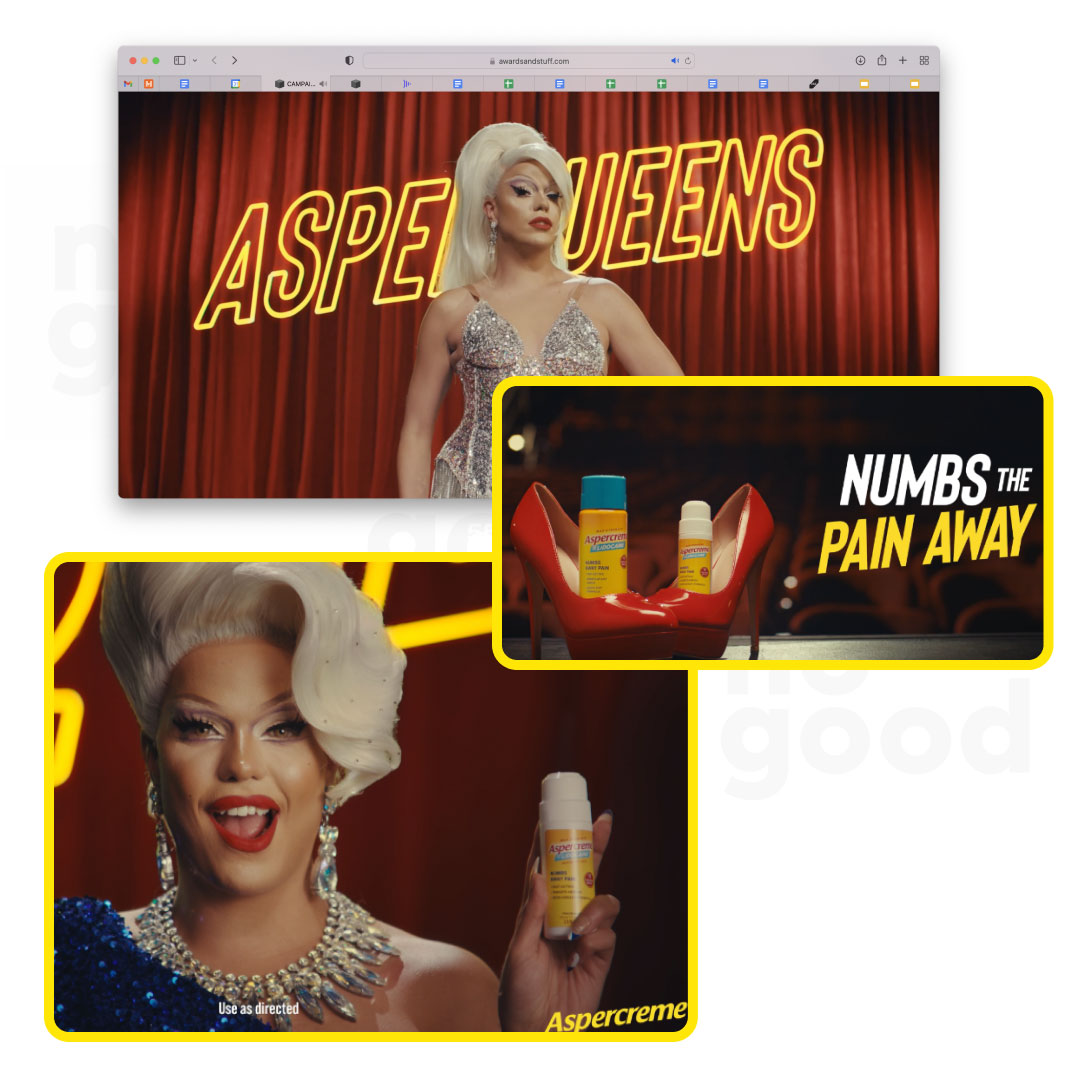Crafting a successful and innovative eCommerce marketing campaign in 2023 requires a strategic approach backed by market research, customer feedback analysis, and a comprehensive understanding of the brand’s target audience. It’s crucial to align the campaign goals with the brand’s community, choose the most effective media mix across online and offline channels, as well as explore new avenues for activating the brand’s community.
These campaigns encompass a range of verticals within eCommerce and highlight brands that are thinking out of the box and pushing the boundaries of what we define as a successful marketing campaign. From partnerships and brand awareness plays to community engagement and social responsibility, these campaigns explore the power of creativity, customer-centricity, and innovation in eCommerce marketing.
How Do You Build a Successful eCommerce Advertising Strategy?
When crafting an eCommerce marketing campaign, it’s important to do market research & review customer feedback to ensure the goals of the campaign are aligned with the brand’s community. The media mix should align with where your community lives and interacts both online & offline. Explore both traditional (SEM, Paid Social, Email), and non-traditional channels (Podcasts, CTV, or even the Metaverse). Weigh the upfront costs along with industry benchmarks to formulate the macro strategy for this campaign.
In most cases, it makes more sense to launch this as a separate entity to ensure results and budget are segmented between evergreen content and this experimental campaign. Best practice varies by channel; however, it’s important to plan the campaign as an augmentation to ‘business as usual’ campaigns.
What Are the Best Marketing Channels for eCommerce?
Here is a proposed growth marketing strategy for an eCommerce Marketing Campaign for a brand in the beauty industry.
1. Paid Social:
Within performance marketing, building awareness for a campaign quickly and efficiently is best achieved via paid social. Depending on the size of the media budget, competition in the space, and demographics of target customers, it’s recommended to test 2 paid social channels for eCommerce. For beauty brands, FB/IG and TikTok will most likely be the strongest return on investment for shorter-term campaigns. Our recommendation is to mimic the campaign structure of top-performing evergreen paid social campaigns and apply this forward to the separate eCommerce campaign.
TikTok
Test value props in the form of individual video assets, preferably with hook testing for each variation. CPC and CPM will be relatively low here and this is the best opportunity to notify customers about the campaign. Leveraging this content plan also provides quick, valuable learnings on what content performs best for this campaign therefore top performing messaging can be applied quickly to other channels. There are a few ways to approach goals for TikTok: website visitors so these people can be retargeted on other channels OR email capture so these people can be sent through a specific flow tailored to this campaign.
FB/IG
Launch a similar content plan as TikTok on this channel to understand how the FB/IG audience responds to the same test. However, test a variety of content types in addition to value prop & hook testing given the variations in age, demographics, and interests between these 2 paid social channels. Because of this, learnings won’t always be consistent so we don’t recommend making blanket decisions from one to another. Leverage machine learning (A+S) campaigns at TOF to drive awareness and see a return on investment, as well as retargeting WSV and retention campaigns, if possible.
2. Paid Search:
Given the nature of this channel, users who convert through Paid Search are typically lower in the funnel because they are taking an action (i.e. searching) compared to other channels such as paid search where the ad is presented while the user is browsing content that’s completely unrelated to shopping.
Non-Brand Campaigns:
Leverage this channel to acquire MOF & BOF search intent driven by paid social & other TOF channels using non-branded keywords. If the conversion rate isn’t strong, test long tail keywords to ensure the campaign is targeting medium-high intent users which will result in higher conversion rates.
Brand Campaigns:
If there’s enough natural volume for the brand name or there’s substantial competition from competitors on the brand name, leverage a branded campaign. For the purpose of this experimental campaign, test optimizing the copy in the branded campaign to reflect the campaign using relevant keywords in the copy.
3. Performance Max (PMax):
Similar to Paid Search, this channel has the highest return on investment for high-intent users who have been introduced to the campaign (or product) from another channel.
Placement Testing:
Experiment with a variety of Google placements (Shopping, YT, Display, etc.) through PMax which allows machine learning to take the reins and serve the ads to the ideal potential customer at the right time. Over time, develop insights and learnings on top-performing placements for future PMax campaigns and apply those going forward. Typically, shopping placements perform best for PMax campaigns for eCommerce brands however results vary by budget, industry, competition, and seasonality therefore it’s recommended to continually run placement tests for PMax.
4. Connected TV (CTV):
If building brand and campaign awareness is a top priority, leveraging CTV is a strong channel to explore. CTV advertising allows you to reach a highly engaged audience through streaming services on smart TVs, connected devices, and OTT (over-the-top) platforms. Immediate return on investment is typically low and CPMs are historically high (upwards of $25 and even $40+ during peak periods). However, this is one of the best channels to achieve high reach and impression share for larger-scale campaigns where a more traditional media mix (Paid Search + Paid Social) is too limiting.
Building a Strategy:
Research the major players in the CTV ecosystem and identify which ones align with the persona of your target audience. Set expectations internally on measurement and attribution of results for this channel prior to launch as this can be difficult to quantify. Ensure creatives are optimized for this platform as traditional TV and paid social ads may not translate well. Tailor the creative to fit the CTV environment (screen size, user attention & intent, and ad formats) as well as experiment with the same value props & hooks as paid social so messaging can be compared after the campaign has concluded.
5. Influencer Marketing:
Partnering with influencers/content creators who have large, loyal followings on social media can help the brand reach new audiences and build trust with potential customers.
Similar to paid media, select influencers whose values and interests align with the brand and this campaign. However, don’t feel limited by the industry (in this case beauty) because some of the most successful campaigns to date have been collaborations with other industries/niches.
6. Email & SMS Marketing:
These channels should be used strategically and sparingly for this campaign. There will naturally be two peaks of interest & therefore purchases: one at the beginning when the campaign is announced and one at the end before the campaign concludes. The goal here is to generate a third or even fourth peak, depending on the duration of the campaign.
Retention:
This is the audience with the highest potential conversion rates because you’ve already won them as a customer. Send campaigns to this audience sparingly to avoid ‘spamming’ them and giving them a poor impression of the brand. Messaging should be around the value they can gain from the product (or campaign) and extra promotional discounts are likely unnecessary here.
New Potential Customers:
If pursuing a lead generation campaign via paid media as mentioned above, create an email or SMS flow for this audience based on the messaging from the inbound campaign. Reinforce the same value prop in which they converted and send a string of emails aimed to drive the conversion.
7. Public Relations (Earned Media):
As a form of earned media, PR aims to secure media coverage and generate publicity through non-paid editorial content. PR is often used to manage a positive image and reputation for a brand in the form of traditional press releases and subsequent earned media placements. Unlike paid media, the challenge lies within relationship building because this channel leverages the credibility and trust associated with third-party endorsements to enhance brand reputation and shape public perception.
Long-term strategy:
PR requires a longer-term investment and shouldn’t be relied upon for quick wins. It takes time to build credibility and secure media coverage, but when it happens the reward will be worth it. PR won’t be a channel to rely on for shorter-term eCommerce campaigns such as a promotion or 1-week narrative. However, for longer-term campaigns (1-3 months) or announcements of strategic partnerships that will have a substantial impact on the brand, PR can be impactful.
8. Website Optimization (Owned Media):
It’s imperative that the website & key landing page for this campaign is optimized for purchases, preferably using the AIDA framework. It’s also important that the website can handle a high volume of traffic and is optimized for mobile traffic & site speed.
5 Best eCommerce Marketing Campaigns: Insights + Learnings
1. Doordash x Sephora partnership
- Who: Doordash and Sephora
- What: Launched as an exclusive partnership that allowed customers to unlock same-day delivery of Sephora products through Doordash at a competitive price.
- When: November 2022
- Where/Channels: Earned Media, PR, Owned Media (Sephora & Doordash website/apps), Affiliate
- How: Campaign was launched with 500 stores across the US with a one-time promotional offer for purchases over $60.

@azaria.mckinnon sephora door dash !! GIRLL WHATTTT & THIS FACEMASK OMG my skin feels so good
♬ original sound – Azaria McKinnon
Doordash x Sephora Takeaways
- Timing: The partnership was launched days after Sephora’s bi-annual Beauty Insider (BI) sale which is a popular and highly anticipated event in the beauty community. By leveraging this strategic partnership in the days immediately after the BI sale leading into Black Friday/Cyber Monday, Sephora was able to boost sales ahead of Cyber5 which is historically an extremely expensive and competitive time to advertise.
- Loyalty: To ensure a frictionless experience, both brands ensured their loyalty memberships were able to be easily connected which allowed for a seamless transition.
- Limitations: Doordash had already been experimenting with retail partnerships, however this was their first expansion into the luxury market. Sephora had previously experimented with Instacart partnerships, however scale was limiting and delivery times were slower and more expensive.
- Long-Term Partnership: Though not a revolutionary concept, the partnership was successful due to its scale, speed, and cost effectiveness to the end user. Based on positive feedback from the communities, the partnership is now a permanent offering to Doordash & Sephora customers. Further, imposing a minimum spend requirement for the promotional offer drove higher AOVs and ultimately increased revenue for both brands.
2. Lululemon Align Legging Dupe Swap
- Who: Lululemon
- What: Knock-off ‘dupe’ culture is a trend that’s posing a serious threat to many eCommerce brands. Some have referred to the movement as recession-core or Gen Z’s anti-consumerism sentiments, but the bottom line remains the same: People are purchasing copycat products more often than they’re buying from the original. Lululemon took the control away from copy-cat brands and back into their court with an in-person ‘Dupe Swap’ event in Los Angeles.
- When: May 2023
- Where/Channels: TikTok, Instagram, Earned Media,
- How: The athleisure brand hosted a 2-day public event which allowed 500 customers per day to trade in dupes of their Align High Rise Pant 25” at no charge to the customer. The only requirement was that the leggings couldn’t be Lululemon.
@lululemon Tiny mic, big Q’s: Align Dupe Swap edition. We want to hear from everyone, how do your lululemon Aligns make you feel? #lululemonalign ♬ original sound – lululemon
Lululemon Align Takeaways
- It’s a Genius Brand Awareness Play: The term #lululemondupe has more than 2M views on TikTok and there’s a plethora of organic content reviewing copycat versions of their apparel. The brand recognized an opportunity to take advantage of the natural buzz and conversation, listen to the community’s feedback, and transform it into a brand experience. Plus, it’s an opportunity for the brand to quickly generate UGC/organic-driven content at no cost to the brand.
- Low-lift, high reward: The leggings were released in 2015 and still are considered to be the leading product on the market nearly 8 years after their release. In comparison to a new product launch or larger advertising campaign, the cost and production required to bring this in-person event to life were minimal. Yet still, the virality and ‘shock factor’ of the event drove the same impact from an organic impression perspective.
- Product Feedback: The brand has unlocked the opportunity to analyze, evaluate, and compare a variety of competitors’ leggings against their original design to identify areas of improvement for their product.
- Community Feedback: In exchange for the Align leggings, customers were required to participate in a brief survey. This allowed the brand to unlock valuable, zero-party data to understand why the community is making a purchase with competitors instead of Lululemon. The general hypothesis is that price is the main deterring factor for not purchasing from Lululemon, but is that really the case?
3. See My Skin
- Who: Vaseline x Hued
- What: Vaseline partnered with Hued, a leader in creating equitable and inclusive healthcare experiences for Black, Latinx, and Indigenous communities, to create a campaign the See My Skin campaign. A key goal of the campaign was to eliminate bias for people of color in skin health and to ensure people of color receive the medical treatment they deserve. The result is a database that allows users to search conditions on skin of color.
- When: August 2022
- Where/Channels: Instagram & FB, YouTube, Earned Media, PR, Owned Media (Dedicated landing page in partnership with both brands)
- How: The campaign was launched with an integrated paid and organic strategy aimed to drive an impact on organic search volume and usage of the database. They achieved a +1,430% increase in people searching for dermatological care & 48% of site visitors took action after visiting the campaign’s landing page.

See My Skin Takeaways
- Importance of Giving Back: For Vaseline, this campaign wasn’t aimed at driving revenue or sales. Instead, this was an opportunity to be a leader in contributing to the greater good and in turn, building and sustaining Vaseline’s positive reputation and brand image. Data has proven that customers are more likely to remain loyal to companies that they perceive as socially responsible.
- Role Model in their Field: For household name brands such as Vaseline, maintaining a strong brand reputation and brand image is important. Studies have shown that consumers are more likely to support companies and are social responsibility and give back to the community, so this is a win-win situation for Hued and Vaseline.
- Increased customer loyalty: For household name brands such as Vaseline, maintaining a strong brand reputation and brand image is important. Studies have shown that consumers are more likely to support companies that are socially responsible and give back to the community. By participating in social good initiatives, Vaseline is strengthening its relationship with customers, winning them as loyal customers, and encouraging repeat business.
4. Asperqueens
- Who: Aspercreme
- What: Aspercreme is a topical pain relief product that’s popular among Baby Boomers. The product went viral on TikTok when women discovered the product as a hack for alleviating the pain of wearing high heels.
- When: Spring-Summer 2021
- Where/Channels: TikTok, Amazon, YouTube, Paid Search
- How: The brand seized the opportunity to take advantage of the natural buzz and took hold of the conversation. The brand strategically partnered with Nicky Doll, a world-renowned drag queen, to take the volume of the campaign to the next level. Though the campaign was scrappy and unplanned, the brand’s ability to move quickly and ride the popularity wave garnered 25M views across paid and organic media and increased sales on Amazon by +70%.

Asperqueens Takeaways
- Influencer Partnerships: Nicky Doll was a contestant on Season 12 of RuPaul Drag Race which premiered in 2020. Season 13 of RuPaul was in the midst of airing when Aspercreme blew up on TikTok, so the show was top of mind for many fans and TikTok users. This is strong example of how partnering with an influencer from another niche can drive success for the brand and expand to a new audience.
- Listen to Community Feedback: Meeting your community where they’re naturally having conversations online is crucial. In this case, the product had historically been popular for Baby Boomers and early adopters from Gen Z, so TikTok likely came from left field. However, staying vigilant to social listening and taking community feedback seriously was the key the brand’s success for this campaign.
5. Robbery Campaign by POPFLEX
- Who: Blogilates & POPFLEX
- What: Cassy Ho is the face behind Blogilates, the #1 Female Fitness Channel on YouTube with nearly 8.5M followers, and the CEO of athleisure clothing brand, POPFLEX. As Blogilates grew in popularity and POPFLEX’s business model scaled, fast fashion brands began to steal their designs and remake them for a lower price point, aka “dupes.”
- When: Spring 2023
- Where/Channels: TikTok, Instagram, Email, Blog
- How: Blogilates & POPFLEX changed the narrative around “dupe culture” and launched the Robbery Campaign which directly targeted Shein, Halara, Club Pilates, and Sharkbarbie for stealing designs, photography & video direction, and messaging. The campaign garnered 101.4K likes on Instagram and secured earned media coverage from reputable news outlets such as Yahoo, and Shein ultimately removed one of the dupes from their website.
Robbery Campaign Takeaways
- Community Activation: Going viral on social media has a certain allure and exclusivity that many brands are chasing to achieve. Blogilates & POPFLEX have gone viral countless times for their community-led growth, feedback-forward content approach on TikTok & Instagram which has propelled the athleisure brand’s into a new stage of growth. However, the growth phase often comes with the price of heightened competition, especially in the eComm/fashion space. POPFLEX took an aggressive approach against their competitors through the Robbery campaign which inspired their already active and loyal community to become brand activists overnight.
- The Power of Speaking Up: As inflation & supply chain challenges continue to worsen, “dupe culture” will continue to grow. Unlike Lululemon, there wasn’t a large volume of organic buzz and conversation around dupe for POPFLEX products. To make the issue top of mind, Cassy & the brand took a loud, combative approach to start the Robbery conversation and own the narrative on their terms. This translated into a highly engaged debate and discussion opportunity for the community in the comment section of the Instagram post and the more extensive blog post on blogilates.com.
Conclusion & Takeaways
The success of eCommerce marketing campaigns in 2023 relies on a strategic approach that explores new oportunties to engage a brand’s community and leverage their insights to improve the brand & product’s offerings. These campaigns exemplify brands that embrace innovative thinking and challenge the conventional boundaries of marketing. From strategic partnerships and brand awareness initiatives to community engagement and social responsibility, these campaigns have demonstrated the ability to captivate audiences and achieve remarkable results.
These campaigns are the best in their field because they’re driven by a comprehensive understanding of the target audience, strategic media planning, and a commitment to innovation and customer-centricity. By incorporating these elements into their campaigns, brands can achieve remarkable results, increase brand loyalty, and drive growth in the competitive eCommerce landscape.






